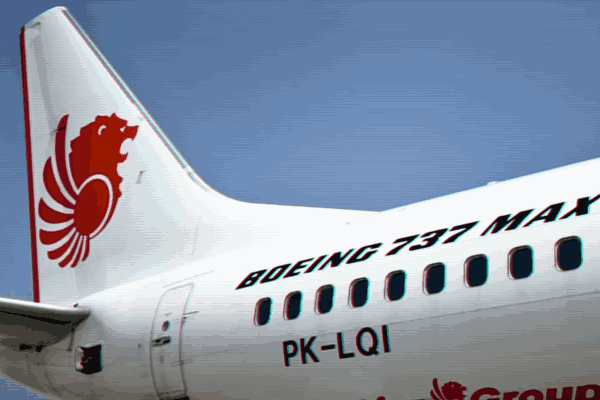THE DUTCH ROLL
A recent incident involving a Boeing 737 Max 8 jet has put the spotlight on a rare but potentially dangerous phenomenon known as a “Dutch Roll“. This unsettling side-to-side motion was experienced during a Southwest Airlines flight on May 25, prompting an investigation by the Federal Aviation Administration (FAA).
The Unsettling Incident
The Dutch roll occurred less than an hour after the flight took off from Phoenix, Arizona. The plane, cruising at 32,000 feet, suddenly began to rock side to side uncontrollably.
Despite the alarming situation, the pilots managed to regain control, and the aircraft landed safely in Oakland, California.
Fortunately, no one on board was injured, but a post-flight inspection revealed substantial damage to the plane’s backup power control unit (PCU), which is critical for controlling the rudder.
Boeing’s Response to the Dutch Roll Incident
Boeing has acknowledged the incident and is cooperating with the investigation. The company is already under intense scrutiny due to ongoing concerns about the safety and quality of its aircraft.
Recently, the FAA also confirmed another investigation involving potentially falsified documents used to certify titanium parts in Boeing planes.
Understanding the Dutch Roll Phenomenon
Dutch Roll, named after an ice-skating maneuver, is a type of oscillatory instability that can occur in aircraft, leading to an uncomfortable and potentially hazardous situation.
Shem Malmquist, a commercial pilot and instructor, noted that while modern planes are designed to prevent such incidents, pilot training is crucial for handling them when they do occur.
The successful management of the situation by the Southwest pilots underscores the importance of rigorous training.
Courtesy : Airlines Quest
Regulatory and Safety Concerns
The FAA’s investigation is part of broader efforts to hold Boeing accountable for its aircraft’s safety. The agency has been working closely with Boeing to address various issues, including the recent concerns about titanium parts.
Boeing has slowed its production rate and presented an action plan to the FAA to resolve these problems, aiming to rebuild trust and ensure compliance with safety standards.
Historical Context: A Legacy of Safety Concerns
The 737 Max series has been under scrutiny since the tragic crashes in 2018 and 2019, which resulted in the deaths of 346 people.
These incidents were linked to issues with the aircraft’s design and software. Earlier models of the 737 also faced problems related to the tail rudder, which were ultimately blamed for several accidents in the 1990s.
Moving Forward: A Path to Safety
As the investigation into the recent Dutch roll incident continues, the FAA and Boeing are working to ensure that such occurrences are rare and that the fleet remains safe for passengers.
Boeing’s commitment to addressing the issues with titanium certification and improving its overall safety protocols is a step towards restoring confidence in its aircraft.
Conclusion: A Call to Action Post the Dutch Roll
The Dutch roll incident involving the Boeing 737 Max 8 highlights the ongoing challenges the company faces in ensuring the safety and reliability of its planes. With the FAA’s vigilant oversight and Boeing’s proactive measures, there is hope that the aviation giant can overcome these hurdles and continue to provide safe air travel for the public.
FAQ’s
Q. What causes Dutch Roll in planes ?
Dutch Roll in planes happens when the aircraft moves side to side and tilts at the same time. Here’s what can cause it:
- Wing Angle: The way the wings tilt up (called dihedral) can make the plane roll when it yaws. If one wing moves forward, it lifts more and makes the plane tilt.
- Yawing: This is the side-to-side motion of the plane’s nose, like turning left and right. If the yawing isn’t controlled, it can lead to tilting and rolling motions.
- Control Surface Issues: If the rudder (on the tail) and ailerons (on the wings) aren’t working together well, it can cause these motions.
- Plane Design: Some planes, especially those with wings that sweep back, are more likely to have Dutch roll because of their shape.
- Turbulence: Wind and air disturbances can start or worsen Dutch roll by pushing the plane around.
- Yaw Damper Problems: The yaw damper is a system that helps stop Dutch roll. If it’s not working properly, the problem can continue or get worse.
Good pilot training and a working yaw damper are key to handling and reducing Dutch roll.
Q. Is Dutch Roll Dangerous ?
Dutch Roll can be risky if not managed well, but modern planes and trained pilots usually handle it. Here’s why it can be a problem:
- Passenger Comfort: The side-to-side and tilting motions can make passengers feel uneasy or scared.
- Stress on the Plane: Severe Dutch roll can put stress on the aircraft’s structure and might cause damage if not fixed quickly.
- Control Issues: Strong oscillations can make the plane harder to control, especially if the yaw damper (a system that helps stabilize the plane) isn’t working properly.
- Pilot Workload: Managing Dutch roll increases the pilots’ workload, especially in tough flight conditions.
While Dutch Roll can be dangerous, modern planes have systems like yaw dampers, and pilots are trained to handle it, making it much less of a threat.
Watch here : Troubles With the Boeing 737 Max
Also Read : The New Addition of Nick Eh 30 Fortnite Icon Series



